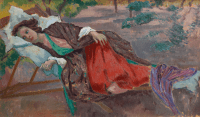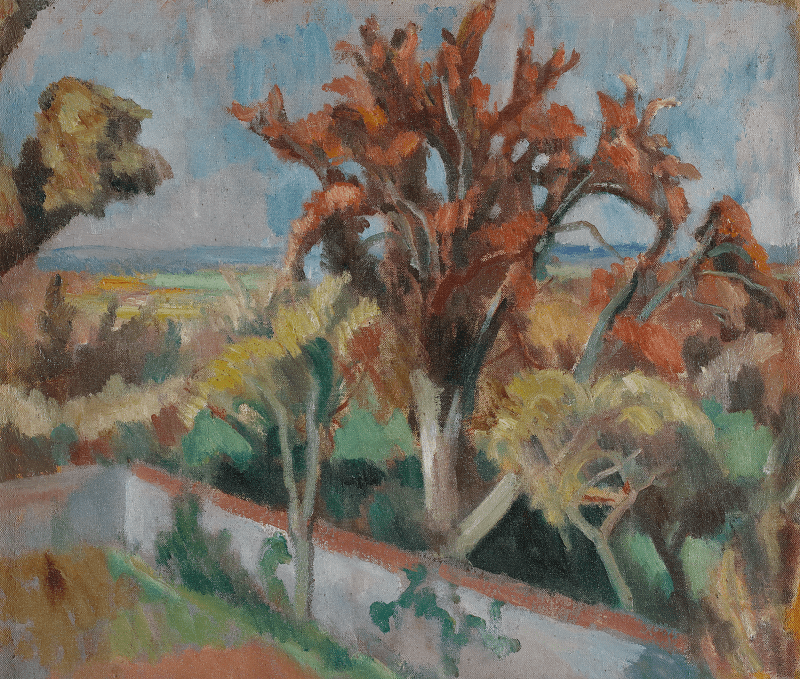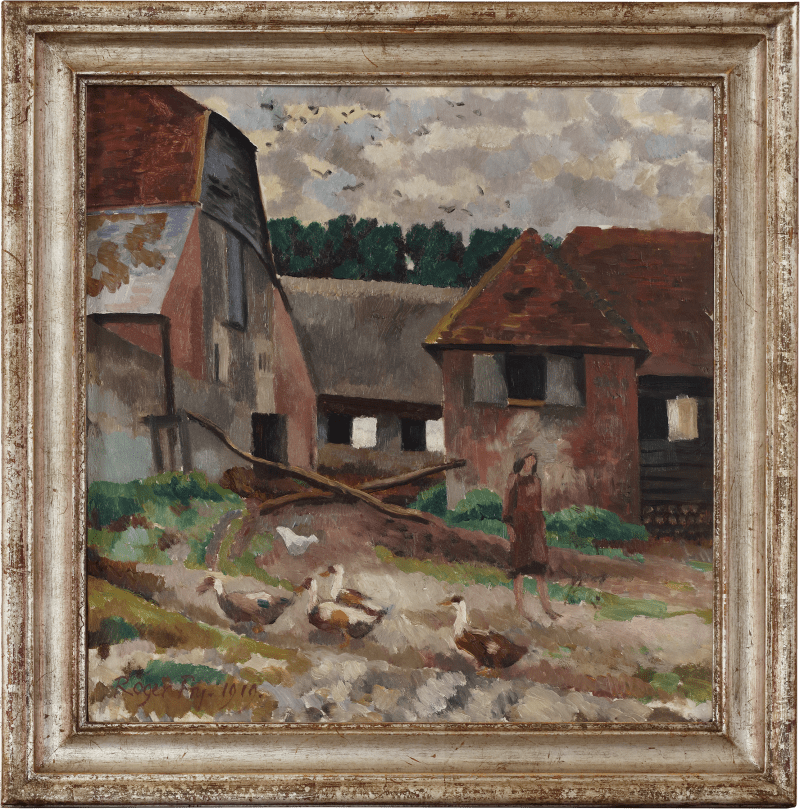To view all current artworks for sale visit philipmould.com
During the summer of 1911 - the year that this portrait was painted - Roger Fry and Vanessa Bell began an impassioned affair which lasted until 1913. Fry’s heart was later broken when Bell fell in love with fellow painter, Duncan Grant. The present painting captures this profound yet fleeting romantic bond between the two artists.
To view all current artworks for sale visit philipmould.com During the summer of 1911 - the year that this portrait was painted - Roger Fry and Vanessa Bell began an impassioned affair which lasted until 1913. Fry’s heart was later broken when Bell fell in love with fellow painter, Duncan Grant. The present painting captures this profound yet fleeting romantic bond between the two artists. This portrait was painted in the year between Fry’s two ground-breaking exhibitions, which dramatically changed the course of British art history: Manet and the Post-Impressionists and the Second Post-Impressionist Exhibition. The year before this painting was executed, Fry retuned to Britain after serving as the curator of paintings at the Metropolitan Museum of Art, New York for the previous four years. On his return to London, he staged his seminal exhibition at the Grafton Galleries, Manet and the Post-Impressionists. This hugely influential exhibition opened the eyes of British artists to the art of European modernists such as Cézanne, Gauguin, Van Gogh, Matisse and Picasso. Although the exhibition outraged many members of the public, and for a while cost Fry his reputation as an art critic, the Bloomsbury group met it with great enthusiasm and Fry became a central figure in their circles. In 1912, the year after this work was painted, Fry staged his Second Post-Impressionist Exhibition, in which both Bell and Grant exhibited. A few months after the closing of this exhibition, in 1913, Fry, Bell and Grant established the Omega Workshops. The Omega ethos was governed by an avant-garde aim to celebrate the decorative and break down any segregation between fine art and design. The group focused on decorative interiors as a form of fine art, to be found in anything from pottery to rug design. When Fry died in 1934, his death was greatly mourned by the Bloomsbury Group, particularly by Bell. Bell decorated his casket and her sister, Virginia Woolf, wrote his defining biography published in 1940. [1] We are grateful to Richard Shone for this information. |















